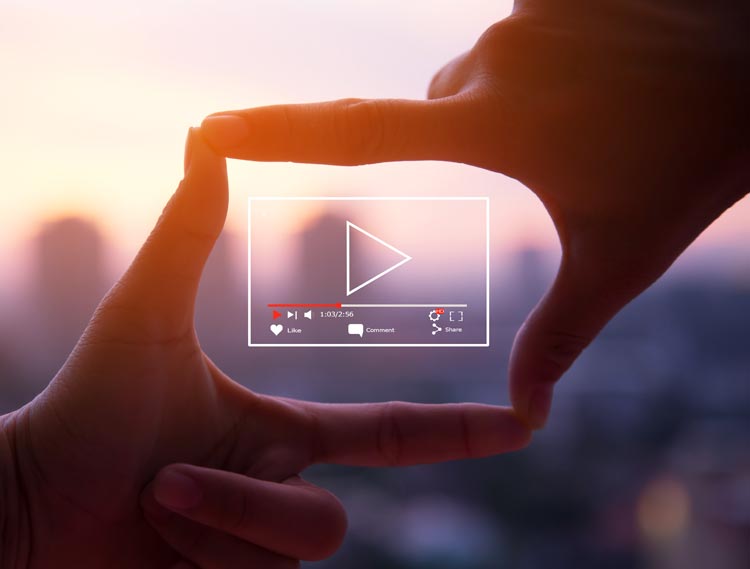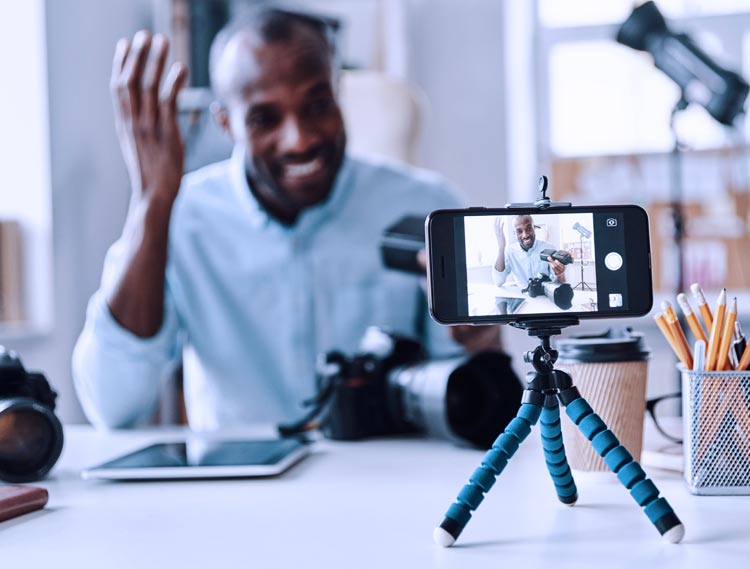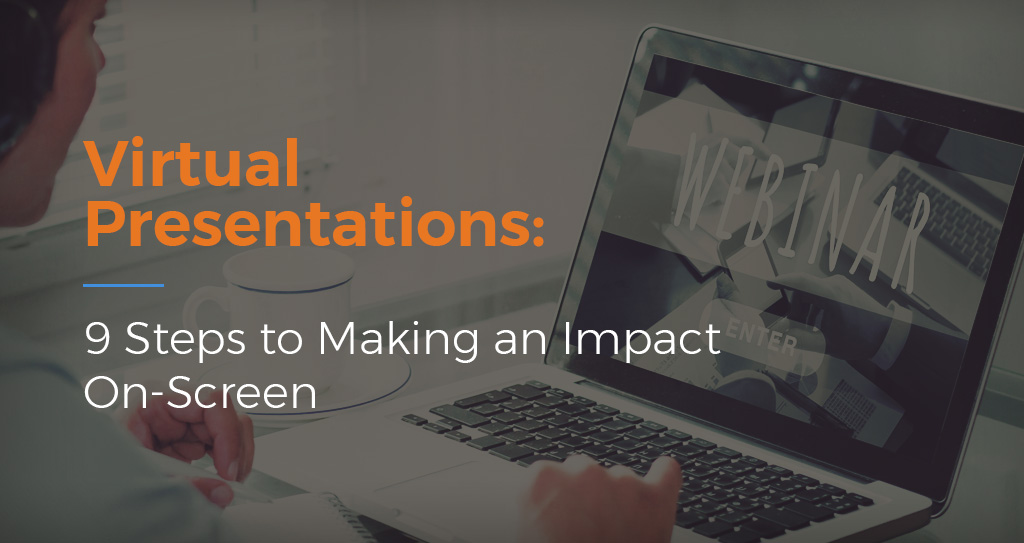In lieu of in-person events, companies have been opting to take their announcements, trainings and meetings online. Though it may seem like the pressure is off because you are unable to see all of your viewers’ reactions, delivering an effective presentation is actually even more important – and in many cases, more challenging to keep a captive audience. You can no longer adapt to the audience’s reactions and more individuals can become distracted by their screens. So how can you keep your audience engaged in your presentation?
Incorporate these nine presentation tips in preparation for your next on-screen delivery.

Consider who your audience is, what you would like them to takeaway from the presentation and any actions you would like them to take post-event.

With your goal in mind, draft up to three core messages that will become the basis of your presentation. Align those with the audience’s interests in the topic you’re presenting. Likewise, make sure you have a narrative and that you’re conveying the beginning, middle and end. Why is that so important? Because 90% of people believe that having a strong storyline is critical for presentation engagement.

Ensure your messages aren’t overly complicated and use relatable anecdotes and analogies to bring the story/messages to life. Data is another powerful tool to drive your key points home.

Instead of being a talking head and having a word-packed PowerPoint presentation, prep visually compelling slides to enhance your presentation. Multimedia assets including captivating photos, charts and infographics are impactful ways to further your story. Plus, they help audience members understand your slides quickly; industry resources says attendees should be able to understand the meaning of your slide within three seconds. Pro Tip: Playing videos for an audience online can be tricky. Test out the sound settings in your webinar platform in advance and remember videos may lag once more viewers are participating. Prepare to send out the link after the presentation or be able to speak to it ad hoc if it doesn’t work. Have an assistant who can support you during the presentation to tell you how viewers are experiencing your presentation.

Put inflection in your voice to emphasize key messages and express yourself using mannerisms (as appropriate). A monotone voice that carries no punch (think Charlie Brown’s teacher) is going to push your audience to check their emails, do other work and, ultimately, tune out what you’re saying. Similarly, refrain from reading slides word-for-word. In fact, don’t even put enough words on your slides where you’d be tempted to read them if you get nervous.

Think of a presentation as a marathon, not a sprint. You don’t want to talk so fast that your audience doesn’t have time to take notes or follow your train of thought, but you don’t want to go so slow that the audience has checked out before you’ve finished.

Without being able to connect in person, the next best thing is being able to look audience members in the eye by gazing directly at your computer’s camera lens. Be sure to avoid continuously reading word-for-word from any notes and instead maintain eye contact with the lens as best as you can. Speaking of cameras, before you turn yours on, be aware of your backdrop, adjust your lighting so you are not washed out, do not have a window behind you, and elevate your camera to eye-level.

Incorporate polling elements and open the floor to a Q&A session via chat and ‘raising hand’ features. (TIP: Prepping seed questions that you feel comfortable answering is a good way to go in case the audience asks challenging questions and/or there is a lag in the audience posing any questions.)

This is possibly the most important tip! If it’s a formal presentation or webinar, do a dry run by recording yourself and playing it back. Likewise, ensure your webinar equipment (computer camera, microphone, software, etc.) is working well ahead of time to prevent technical difficulties during the presentation.
If you need help dusting off your presentation skills or need a practice audience to provide constructive feedback or guidance, MBE Group offers a presentation coaching program for individuals and groups.
